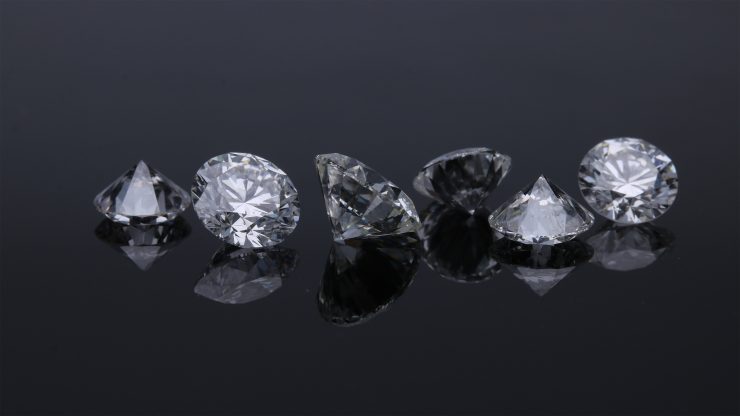Introduction to Lab-Grown Diamonds and Their Emergence
Lab-grown diamonds have gained significant attention over the past decade as a more sustainable and cost-effective alternative to natural diamonds. These diamonds are created in laboratories using advanced technological processes such as High Pressure High Temperature (HPHT) or Chemical Vapor Deposition (CVD), both of which replicate the natural diamond-forming environment within the Earth. While lab-grown diamonds are chemically, physically, and optically identical to mined diamonds, they differ primarily in origin and cost. Their affordability and ethical appeal have made them especially popular among environmentally and socially conscious consumers. As demand increases, discussions surrounding the long-term value and resale potential of lab-grown diamonds have intensified. Understanding the dynamics of their resale market requires a thorough examination of current trends, market behaviors, consumer perceptions, and future economic projections. This article aims to explore the resale landscape for lab-grown diamonds, highlighting trends and predictions grounded in industry data and economic indicators.

Initial Market Position and Retail Pricing
When lab-grown diamonds first entered the jewelry market, they were priced only marginally lower than their mined counterparts. Early on, many retailers capitalized on their ethical appeal and the high-quality nature of the stones to justify pricing models that closely paralleled natural diamonds. However, as production methods improved and more manufacturers entered the market, supply surged, leading to noticeable drops in wholesale and retail prices. Today, lab-grown diamonds can retail for 30–70% less than comparable natural stones, depending on size and quality. This pricing disparity directly impacts resale potential because the initial purchase price is a strong determinant of resale value. In the current resale market, consumers often find that their lab-grown diamonds fetch lower offers than expected, largely due to the decreasing retail cost over time and a still-developing secondary market. Unlike natural diamonds, which have a longer track record of holding value, lab-grown diamonds face depreciation trends more akin to consumer electronics than luxury collectibles.
Consumer Perception and Its Impact on Resale Value
Consumer perception plays a pivotal role in determining the viability of a resale market. While a growing number of buyers are embracing lab-grown diamonds for ethical and financial reasons, many still view them as less prestigious or less “authentic” than natural diamonds. This perception can hinder resale prospects, as potential secondhand buyers may place a lower subjective value on lab-grown stones. Additionally, the notion that lab-grown diamonds are mass-produced or widely available can lead to assumptions of reduced rarity and uniqueness, qualities that traditionally drive resale value in the gemstone market. This psychological factor influences not only individual consumer behavior but also affects how jewelers and pawnbrokers assess and price these diamonds when offered for resale. Until lab-grown diamonds achieve broader acceptance as equivalent substitutes in the luxury space, they will likely struggle to command strong resale prices compared to their natural counterparts.
Resale Infrastructure: Limited but Growing
One of the core challenges for the resale market of lab-grown diamonds is the lack of established infrastructure. Traditional resale channels—such as consignment shops, pawnshops, auction houses, and diamond brokers—have been slow to embrace lab-grown stones due to uncertainties about long-term demand, pricing benchmarks, and market liquidity. Without a robust ecosystem of buyers and sellers, it is difficult to maintain stable secondary market pricing. However, some online platforms have begun to specialize in lab-grown diamond resales, offering grading services and resale estimates tailored to lab-grown stones. These digital marketplaces are helping build transparency and reliability in the resale process. Additionally, some retailers are beginning to offer buyback or trade-in programs for lab-grown diamonds, which may help to stimulate resale activity. Although these efforts are still in their infancy, they signal a growing recognition of the need for a structured resale market and the potential for long-term development in this area.
Price Trends and Market Depreciation
Depreciation is a defining characteristic of the lab-grown diamond resale market. Unlike natural diamonds, which may retain or even appreciate in value due to rarity, lab-grown diamonds have consistently shown downward pricing trends over time. This decline is largely driven by oversupply and technological advancements that continue to lower production costs. As manufacturers can now create larger, higher-quality lab-grown diamonds with greater efficiency, the market has become increasingly saturated. This oversupply exerts downward pressure on both retail and resale prices. Consequently, consumers selling lab-grown diamonds on the secondary market often receive significantly less than the original purchase price. This depreciation is compounded by the fact that most buyers still prefer to purchase new lab-grown diamonds rather than pre-owned ones, further reducing resale competitiveness. For consumers looking at lab-grown diamonds as an investment or store of value, the data suggest a need for caution and a realistic understanding of price behavior over time.
Future Outlook: Market Evolution and Changing Perceptions
Looking ahead, several factors could influence the future trajectory of the resale market for lab-grown diamonds. One of the most important is the potential shift in consumer attitudes. As sustainability becomes an even more prominent consideration in luxury consumption, lab-grown diamonds could gain increased prestige and cultural legitimacy. If societal acceptance grows to the point where lab-grown diamonds are viewed as equally desirable and valuable as natural ones, resale demand could strengthen accordingly. Furthermore, younger generations—particularly Millennials and Gen Z—are already showing a preference for lab-grown alternatives, which may create a stable base of secondhand demand over time. Retailers and financial institutions may also develop more consistent appraisal standards and market indices for lab-grown stones, helping to normalize and stabilize pricing. If third-party verification systems become more standardized and trade-ins become more accepted, the infrastructure needed for a robust resale market could materialize over the next decade. Ultimately, while the path is not guaranteed, evolving perceptions could support a more dynamic and equitable resale environment.
Technological Advancements and Market Saturation
The production of lab-grown diamonds continues to evolve at a rapid pace, with constant improvements in yield, clarity, and carat size. These advancements are beneficial to manufacturers and consumers alike in terms of accessibility and quality. However, they simultaneously contribute to the challenge of market saturation, which undermines resale values. As it becomes easier and cheaper to produce flawless lab-grown diamonds, previously purchased stones begin to lose their market edge. This dynamic mimics the behavior seen in electronics, where newer models quickly outpace the value of older ones. This is a critical distinction from natural diamonds, which have limited geological supply and thus preserve a sense of scarcity. Without deliberate market controls or production caps, it is likely that lab-grown diamond supply will continue to outpace demand, keeping resale values suppressed. This ongoing influx also prevents the formation of vintage or antique markets, which are important value preservation mechanisms for many types of luxury goods.

Economic Factors and Investment Viability
From an investment perspective, lab-grown diamonds currently do not perform well when compared to natural diamonds or other traditional investment vehicles. The combination of high depreciation, limited resale channels, and fluctuating consumer demand reduces their viability as a store of value. While they are often more affordable on the front end, the loss of value post-purchase is substantial. This makes lab-grown diamonds more appropriate as personal or emotional purchases rather than financial ones. Economic downturns and inflation may further affect resale dynamics, as discretionary spending declines and consumers seek liquid assets with historically stable values. Although some manufacturers are attempting to build collector-based branding around their lab-grown products, such strategies are still unproven in terms of long-term value retention. For now, those purchasing lab-grown diamonds should do so with the understanding that resale returns may be limited, and that these items are best enjoyed for their aesthetic and symbolic qualities rather than investment potential.
Predictions: What Lies Ahead for the Resale Market?
The resale market for lab-grown diamonds is likely to undergo gradual development rather than rapid transformation. As more consumers enter the market and as resale infrastructure improves, a modest but more structured secondary market may emerge. Over the next five to ten years, industry analysts anticipate that new resale platforms will provide comparative data, transparency, and perhaps even certification tailored specifically to lab-grown stones. Large-scale retailers may start integrating resale options or offering trade-in credits to stimulate customer retention. However, unless mechanisms to control production or introduce artificial scarcity are established, it is unlikely that lab-grown diamonds will ever achieve the same resale performance as their natural counterparts. The most optimistic projections envision a market where lab-grown diamonds can reliably fetch 20–40% of their original purchase price on resale—a rate still below natural stones, but substantially better than the near-zero offers some sellers currently encounter. Ultimately, the resale future of lab-grown diamonds depends on how well the industry balances accessibility with exclusivity.
Conclusion
The resale market for lab-grown diamonds remains in a nascent and developing stage, heavily influenced by consumer perception, oversupply, and a lack of established infrastructure. While these diamonds have clear advantages in terms of ethics, price, and environmental impact, their investment potential remains limited due to ongoing depreciation and a relatively immature resale ecosystem. Future growth in the resale market will depend on evolving societal norms, economic trends, and the diamond industry’s willingness to standardize resale channels and support infrastructure. For now, lab-grown diamonds offer an attractive purchase for those prioritizing cost and sustainability, but sellers should be aware of the limitations in resale value. With increased market transparency and cultural acceptance, lab-grown diamonds may one day command a stronger position in the secondhand market—but that reality is still in the making.